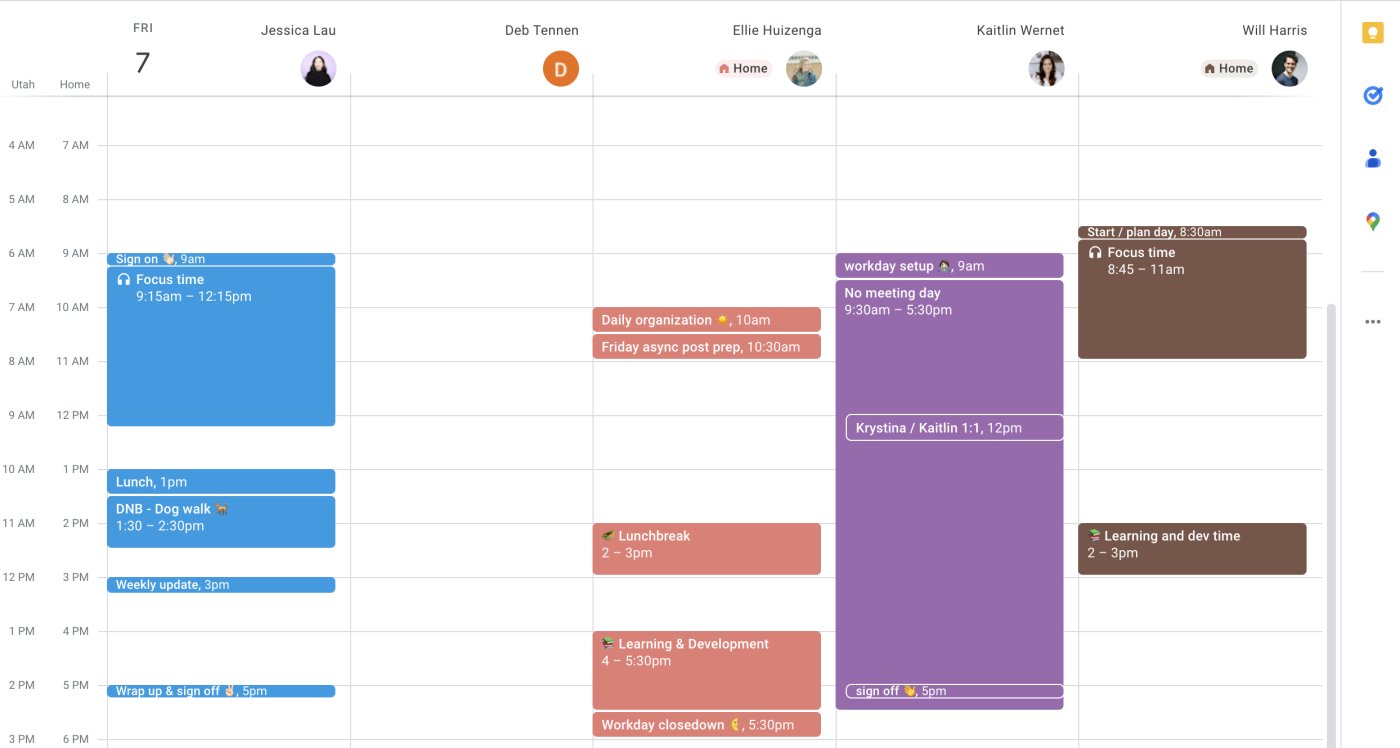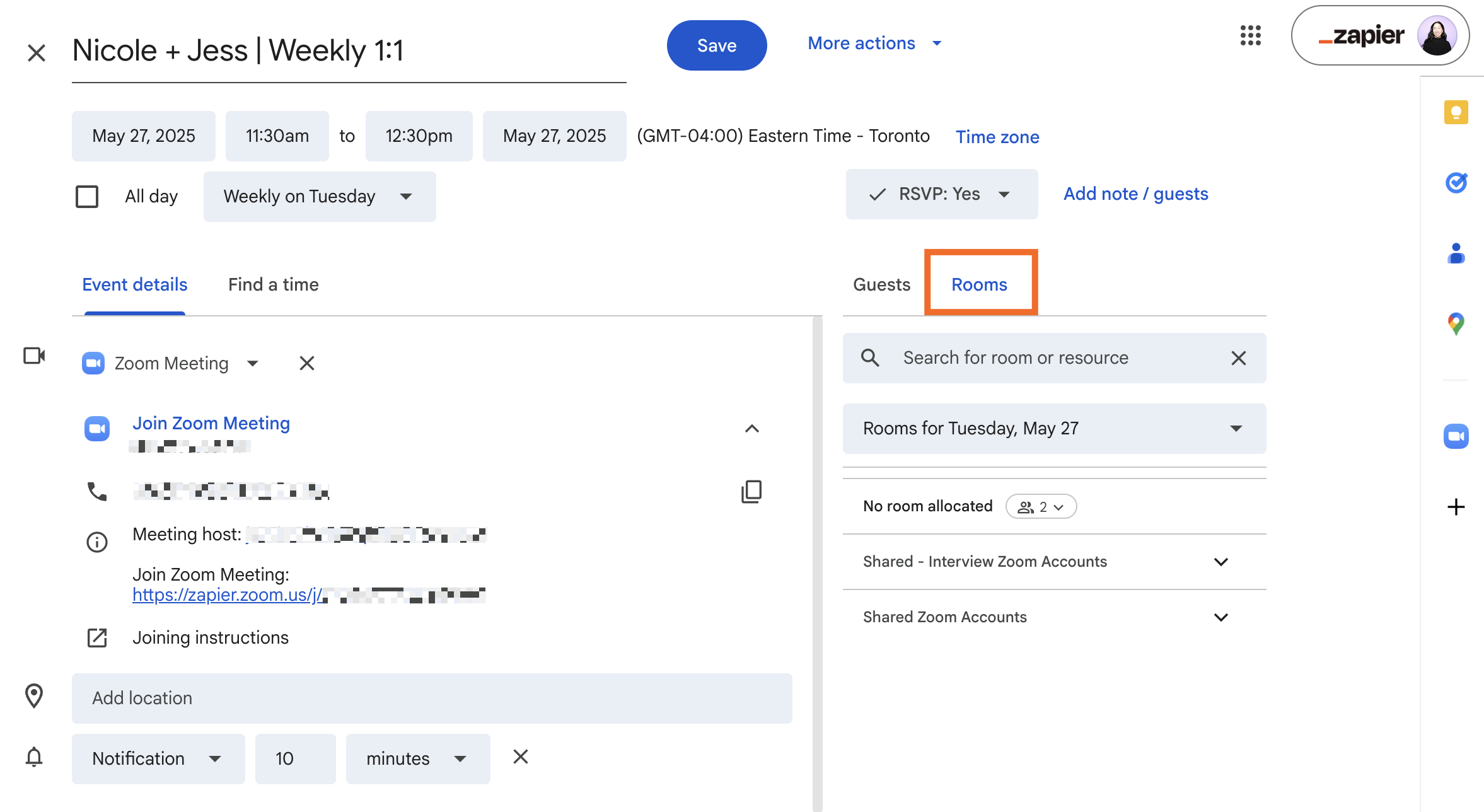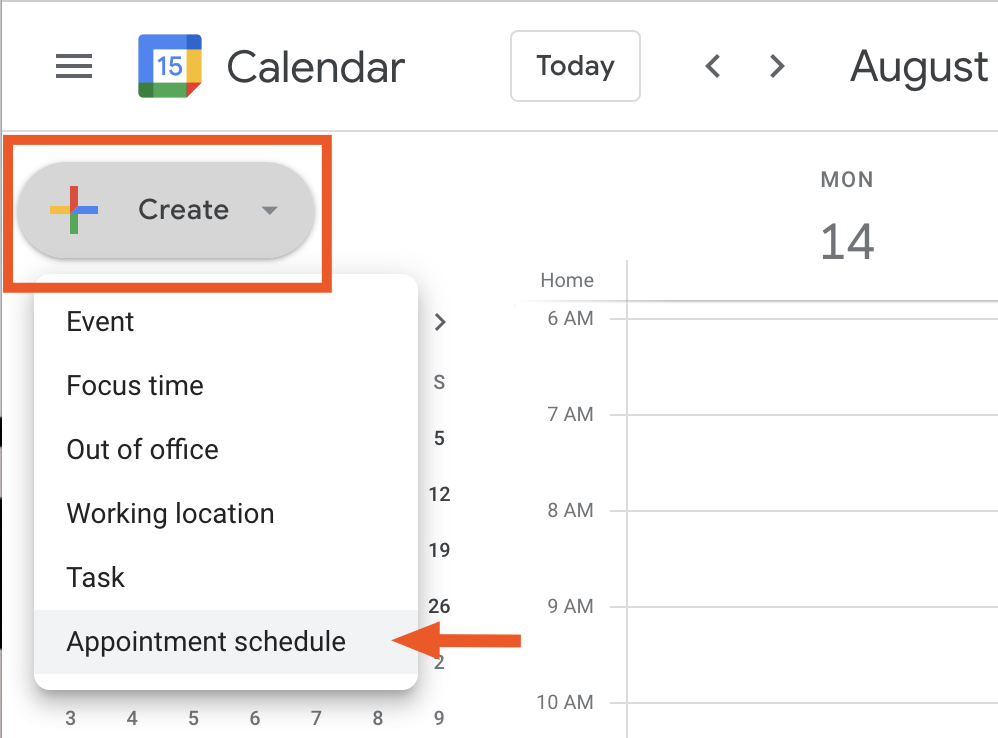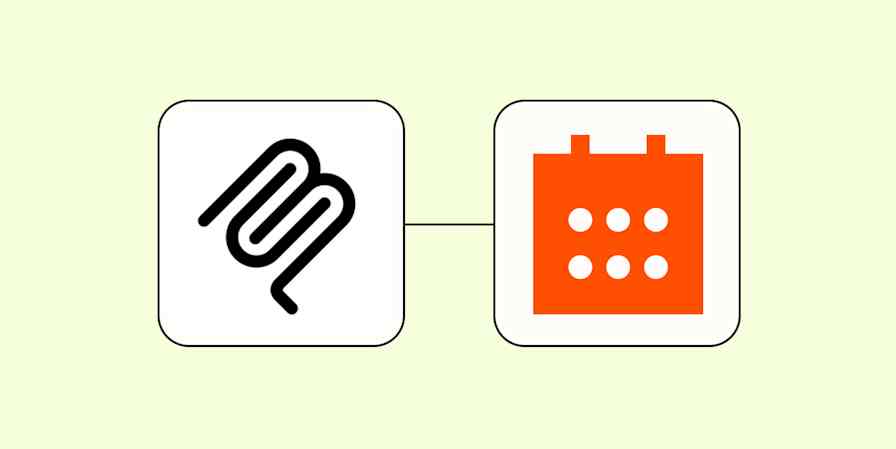You probably don't spend much time in Google Calendar, or obsess over new Google Calendar features.
That's a good thing: calendars are for planning your time, not spending it. But Google Calendar does get new features regularly, and there's a good chance you missed some in the past few years.
Here are some Google Calendar features that you might have missed.
Table of contents:
1. View multiple calendars side by side
Let's say you need to be aware of someone else's schedule on an ongoing basis. If you're part of a Google Workspace account, you can subscribe to your teammates' calendars.
By default, everyone's events are shown in one unified calendar, but you can change this to a side-by-side view instead.

This isn't limited to one other calendar, either. You can compare a number of teammates' calendars, if the need arises.

2. Hide your event details
You may want your team to know when you're busy or free—but not why. Google figured as much, which is why you can set events to Public or Private.

If you go with the latter, the event will still be visible to everyone else on the calendar—it will just say "busy" instead of the name of the event.

3. Schedule event meeting rooms
Calendars are for time, but Google Calendar can also help you organize space. Or spaces, at least. In an event invite, you can search through your company's available meeting rooms, see what resources they have, and add them to an event directly.
Create an event as you normally would.
Click Rooms (next to Guests).

Enter the name of the room you want to book. If your company has it set up, you can also choose from shared virtual meeting rooms.
Click Save.
4. Create a Google Calendar appointment schedule
Google has an appointment schedule feature that's similar to Calendly.

With the Google Calendar appointment schedule, you can:
Share a professional booking page
Customize your appointment availability
Get email notifications about booked appointments
For a step-by-step tutorial, here's how to use Google Calendar appointment scheduling.
Note: The appointment schedules feature is currently available with a personal or Google Workplace Business Starter account.
5. Let your coworkers know when you'll be offline
Canceling all the meetings you'd otherwise have to attend is maybe the best part of planning a vacation. Before you manually scroll through your calendar to reject those meetings, don't.
With Google Calendar's out of office feature, you can schedule away dates in your calendar and set it to automatically decline new and existing meetings all at once.

Now go forth and prevent your coworkers from booking meetings you can't attend.
6. Split your working hours
One of the joys of working remotely with Zapier is that you have the flexibility to set your own hours—you're not confined to a traditional 9-to-5. So if you want to work four hours in the early morning, take an extended break, and get back at it later in the evening, you can. But a key part to making this flexibility work is communication: you have to give your coworkers a way of knowing when you're available or unavailable.

Google Calendar lets you split your working hours. It'll gray out your offline hours, making it easy for your team to quickly glance at your availability.

If someone tries to book a meeting with you outside of these working hours, Google will specifically tell them you're not working then.
Google did add one confusing detail for some inexplicable reason: when it tells you you're trying to book a meeting outside of someone's working hours, it'll also show the current time next to the message instead of something more helpful—like their working hours.

7. Change your Google Calendar view
Google Calendar offers every view you could need: day, week, month, year, schedule (a vertical list of your scheduled events), and four days at a time.

To switch to a different view, click the down caret (⋁) next to the current view, and select the way you want to display your calendar. If you want to quickly toggle between views, use the keyboard shortcuts: D for Day, W for Week, M for Month, Y for Year, A for Schedule, and X for 4 days.
Heads-up: In the Year view, dates with events aren't highlighted. But you can click on a date to see everything scheduled in a popover. Or double-click a date to open it in Day view.

8. Search Google Calendar for past or future events
Google Calendar used to have a pretty bad search feature, which is ironic coming from literally Google. But that's since been rectified. Now you can quickly find an event by searching for any term included in that event.
Click the search icon, which looks like a magnifying glass, and type in your query. For example, you can use the event name, an attendee's email address, the meeting location, or even notes shared in the meeting description. Google will instantly find contacts and events that match.

Click an event to open a quick preview. You can also click a contact, and Google Calendar will show a list of every event with that contact.
Need to find a specific event? Click the down caret (⋁) next to the search box to open Google Calendar's advanced search options. You can choose which calendars to search through, invitees and locations to watch for, search terms to find (or not find), and a specific date range to search. That should be enough to find what you need.

9. Add focus time
If you, like me, are an avid time blocker, Google Calendar lets you add focus time so you can ruthlessly defend your time. Adding focus time in Google Calendar is just like adding any other event—you'll just choose a different type.
Here's a detailed tutorial on how to add focus time in Google Calendar, along with a few tips for how you can use it. Note: This feature is available only for users with a work or school Google account.
Setting aside focus time is only half the battle for me, though. Not getting distracted by notifications is the other half. Because I don't like to test the limits of my willpower, I have Google Calendar automatically decline meeting invites that interfere with my focus time.
If your go-to team chat app is Google Chat, you can also automatically mute those notifications.

10. See how you spend your workdays with Time Insights
Humans are notoriously terrible at estimating time. There are plenty of days where it feels like I've spent hours on a task, but the clock tells me it's been a mere 45 minutes. For a more accurate read on how you're actually spending your time, use Google Calendar Time Insights.
There's an at-a-glance view of how you spend your time in the left-side pane below the mini-calendar. But for a more detailed breakdown, click More insights.

11. Bring back the weather forecast
Google giveth and Google taketh away (RIP Google Reader). One Google Calendar feature that disappeared is weather forecasts. Don't worry, though—you can add it back with the help of this third-party service.
It's not as pretty as the old weather feature, but it gets the job done.

Automate Google Calendar
The hope with any of these features is that using them saves you time, so you can focus on more important work. While automatically declining meetings may not seem like a revolutionary time saver, the minutes do add up.
To reclaim even more of your time and mental energy, use Zapier to connect Google Calendar with your other apps. Learn more about how to automate Google Calendar, or get started with one of these workflows.
Create new Trello cards from new Google Calendar events
Copy new Google Calendar events to another Google Calendar
Add new Google Calendar events to databases in Notion
Zapier is the most connected AI orchestration platform—integrating with thousands of apps from partners like Google, Salesforce, and Microsoft. Use interfaces, data tables, and logic to build secure, automated, AI-powered systems for your business-critical workflows across your organization's technology stack. Learn more.
Related reading:
How to add your calendar to your computer's desktop wallpaper
How to merge Google accounts (Gmail, Calendar, and Contacts)
This article was originally published in February 2021 by Justin Pot. The most recent update was in May 2025.










